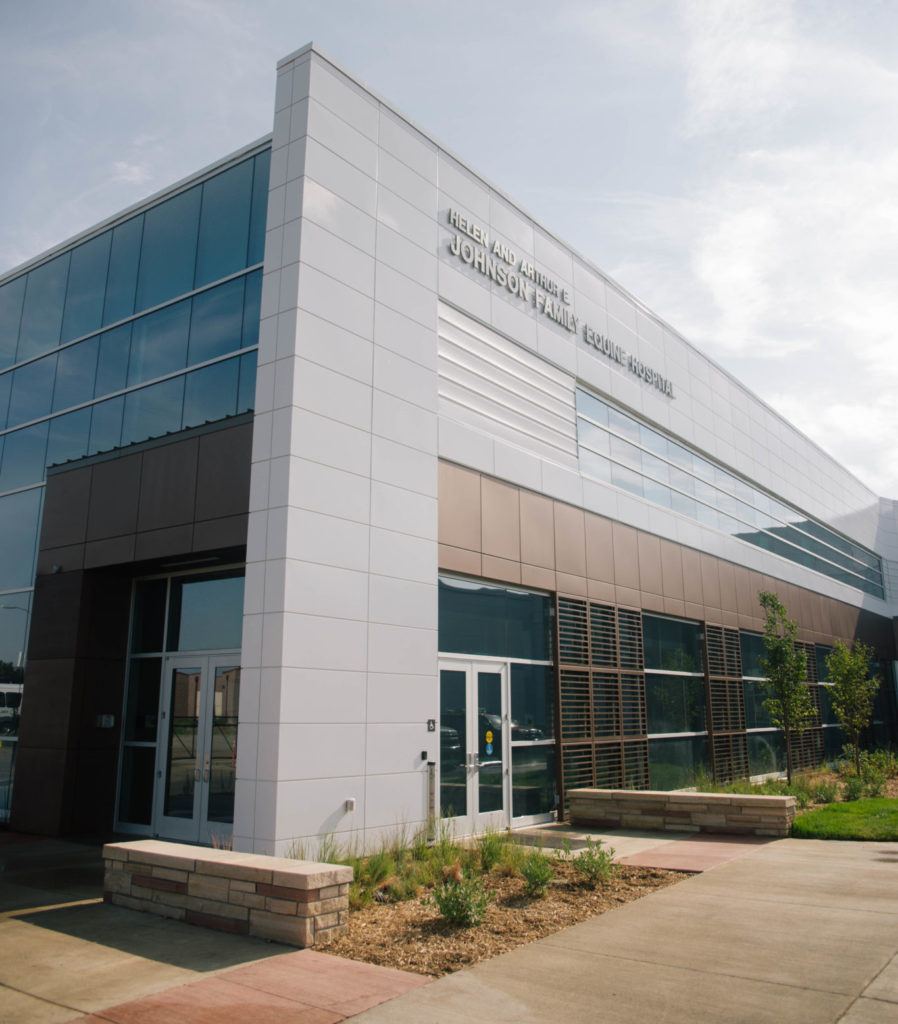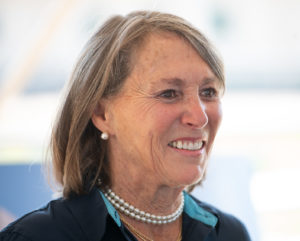
The new Johnson Family Equine Hospital feels like a barn but has all the hallmarks of a hospital. This month, Colorado State University’s equine veterinary services move from their previous home inside the James L. Voss Veterinary Teaching Hospital into a larger standalone space entirely dedicated to equine medicine and care.
The new equine hospital was built to provide extra space for individual horses and improve personalized care. Not just for the patients’ comfort, but also to allow clients to be more involved in their horse’s care.
In contrast to the 1980s, right after the Veterinary Teaching Hospital was built and horses were primarily business assets (think horse racing and cattle herding), today’s horse is considered part of the family. And typical horse owners today know a lot about their equine companion’s veterinary care.
“We wanted to make sure it wasn’t just comfortable for horses, but comfortable for people, as well,” said Dr. Chris Kawcak, director of equine clinical services.
With side-by-side rounds rooms – and even a separate, on-site equine pharmacy – the Johnson Family Equine Hospital creates a modern-day medical world built specifically for horses.
“We’re bringing the medicine a lot closer to the client,” equine operations manager Britt Mactavish said. “Now, clients can interact with their animal throughout the appointment.”

Lynn Campion understands the importance of being there for every step of her animals’ care. She’s the granddaughter of Helen and Arthur Johnson, whose foundation provided the $10 million gift that made the equine hospital possible, and has experienced firsthand – as a horse owner and client – what it’s like to receive care from the equine services at CSU.
With exam space tripled compared to the previous equine services facilities, there’s plenty of room for owners like Campion to stay with their horses throughout their exam, whether it’s a pre-operative appointment for an elective procedure with internal medicine or a lameness evaluation for a sport horse.
Modern space for modern medicine
Veterinary medicine has evolved over the past 40 years, and the new equine hospital aligns physical space with the modern technology that goes inside it.

For example, the new building has a dedicated standing surgery space to accommodate the trend toward the use of more minimally invasive techniques. Equine patients remain standing while sedated for their procedure, and the minimally invasive techniques allow for less risk, quicker recovery, and the space itself makes the whole process more efficient.
Location of the new building, and its proximity to the Translational Medicine Institute next door, is an added benefit. While the equine team has their own ultrasound, radiograph, and nuclear scintigraphy machines, the Translational Medicine Institute provides access to additional advanced imaging technology – just a 100-foot trot away.
“We can literally walk a horse across the street and use their MRI and CT machines,” Mactavish said.
In addition to improved accommodations for exams and procedures, the building incorporates advanced biosecurity capabilities. While CSU is already a tertiary referral hospital for infectious diseases and emergencies, the new space adds improved critical care and isolation facilities that allow for enhanced accessibility to critically ill and injured patients, and for horses suffering from infectious diseases.
Close collaborations
Creating a common space for equipment and equines also brings together the people behind the operation. The hospital houses all five equine services: emergency and critical care; field service; internal medicine; sports medicine; and surgery and lameness.
Collaboration is key to providing well-rounded care, and now the faculty clinicians, third- and fourth-year veterinary students, house officers, and veterinary technicians providing that care have direct access to peers and mentors with significantly less foot (and hoof) traffic than before.
“When a student is caring for a patient, they want access to faculty members and to each of their patients,” Mactavish said. “Now, it’s all in one building.”
To foster a teaching and learning environment for everyone, students need easy access to mentors and patients, while clinicians benefit from collaboration with other faculty.
With improved observation areas throughout the building, students will also get a front-row seat for CSU equine research, like joint-problem prevention and healing solutions developed just down the road at the Gail Holmes Orthopaedic Research Center. Direct access to approved prevention, detection, diagnosis, and treatment methods coming straight from the Veterinary Teaching Hospital’s clinical trials program means that clients at the equine hospital are often beneficiaries of those same novel developments.
Here for horses, from the beginning

As the field of equine veterinary medicine continues to advance, CSU aims to ensure its students, faculty, and staff are equipped with the space and technology they need to provide compassionate care to horses and the humans who care for them.
The university’s founding began with the horse, and the Johnson Family Equine Hospital continues that legacy, making room for further growth.
“This building allowed us to modernize what we know is efficient and effective veterinary medicine for horses right now,” Mactavish said. “And hopefully we’ve built a facility that will help us continue that mission for the next 40+ years.”